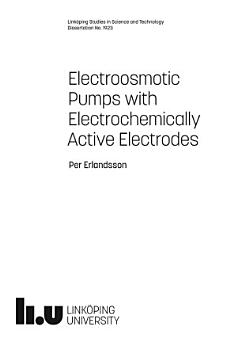Electroosmotic pumps with electrochemically active electrodes
এই ই-বুকের বিষয়ে
The first paper of this thesis investigates the differences in characteristics between an electroosmotic pump with metal electrodes and one using electrochemically active polymer electrodes. With metal electrodes reactions normally take place at the metal/electrolyte interface where the electrolyte or species therein are either reduced or oxidized to maintain an electric current. For water-based electrolytes the electrolysis of water produces pH altering species and gas, which can interfere with microfluidic systems. As electrochemically active electrodes can themselves be reduced or oxidized, the amount of undesired reactions at the polymer/electrolyte interface can be significantly decreased. The second and third papers investigate the use of porous potassium monoliths as electroosmotic pumps in microfluidic devices using electrochemically active electrodes. Porous potassium silicate monoliths were created inside fused silica capillaries in order to increase the pumps resistance to pressure driven flow. Potassium silicate structures without a fused silica capillary as a scaffold were produced in molds of polydimethylsiloxane. Asymmetric pumping properties of these stand-alone monolith was sometimes observed. Monoliths were produced in conical molds in an attempt to increase the asymmetric behavior.







